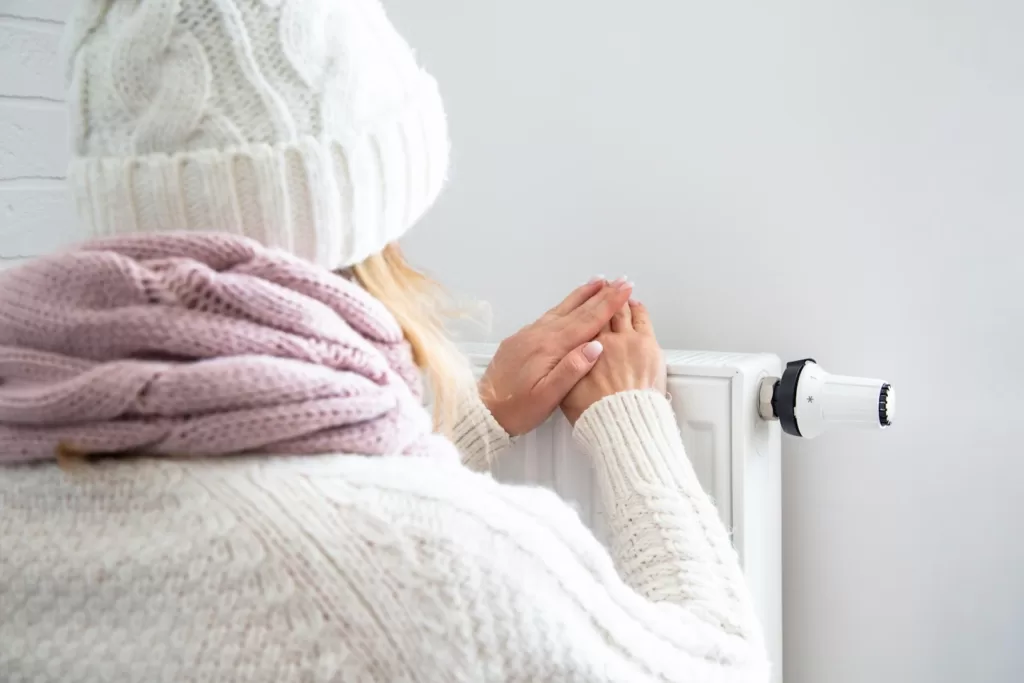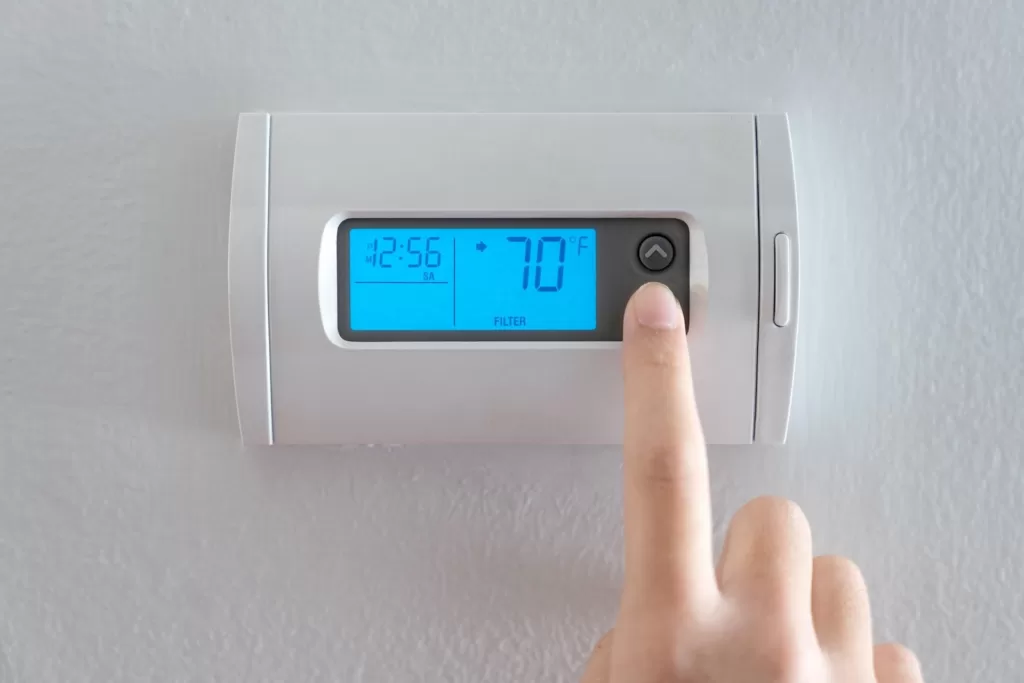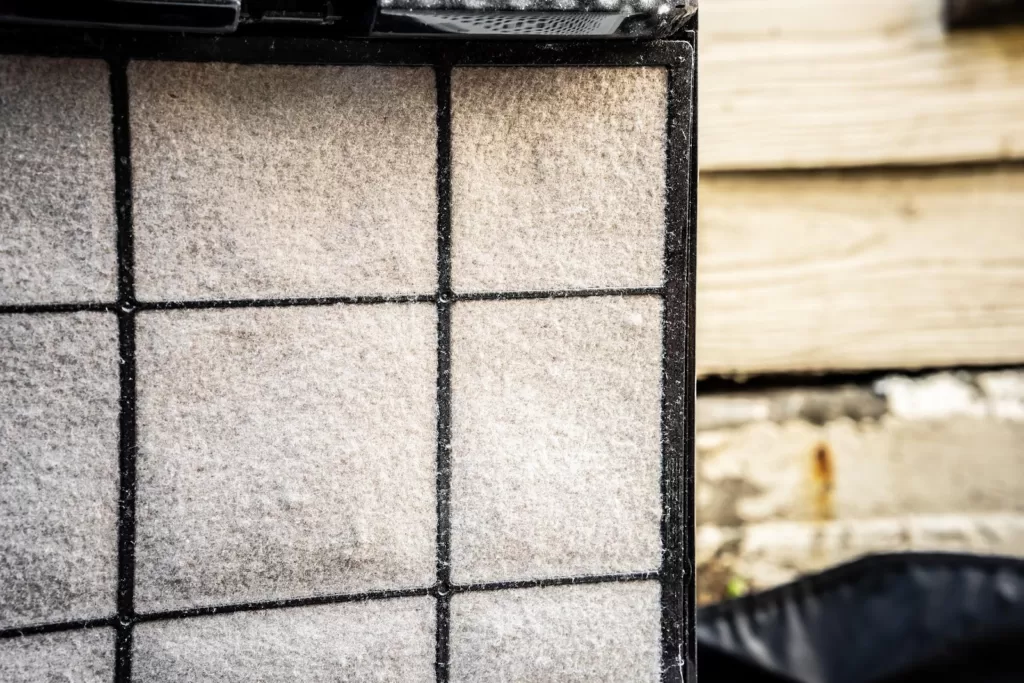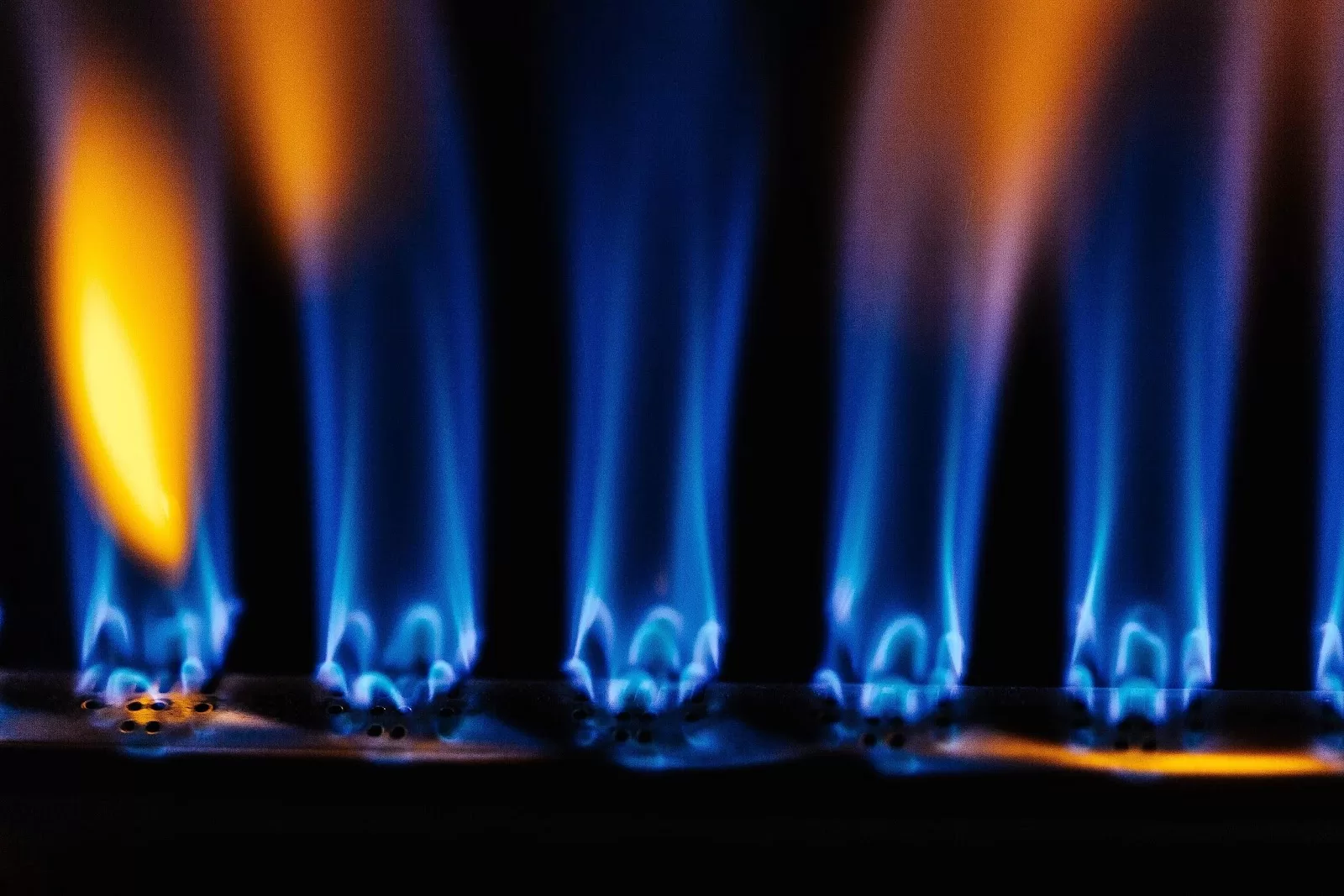Predicting when a problem with your heating system will arise is as easy as predicting the winning lottery numbers, that’s why you will always hear us at Oasis tout the importance of routine and regular maintenance of your home’s cooling and heating systems. Now, that said, even with proper care, bad things happen, and usually at the worst times. Never fear, Oasis is here! We’ve compiled a list of the top 10 most common heating problems people face and how to troubleshoot them, but remember it’s always best to trust a professional.
Without further ado, here are the top 10 most common heating problems with some simple tricks on how to troubleshoot them.
- Odd Noises
Heating systems, just like any other machinery, generate sounds as they operate. If you happen to have an older heating system, you’ve likely become accustomed to its frequent noise. While modern furnaces tend to be quieter, they too possess components and functions that can occasionally produce previously unnoticed sounds.
The majority of sounds emanating from your heater are typical, but if you detect an unusual noise, it may warrant closer attention. Here, we will differentiate between commonplace and less common noises and provide insights into their meanings, empowering you to discern when it’s appropriate to seek assistance based on the specific sound you encounter.
Pops and Bangs
When you initially turn your heater on, it is pretty standard for it to make some popping and banging noises. It could be as simple as dirty burners or an excess of gas inside the chambers. You might also hear similar noises when your heater shuts off, and that could be the ductwork contracting as the metal cools down. All Normal, no worries!
Squealing Noises
Squealing sounds can indicate issues with your heater’s belts or a lack of lubrication in the shaft bearing. In such cases, it’s advisable to consider Oasis Cooling & Heating as your trusted local HVAC professional. Our team of experts specializes in diagnosing and resolving heating system problems, including belt or bearing replacements. When you hear this noise, don’t hesitate to get in touch with us. We’ll swiftly pinpoint the source of the issue and ensure that any necessary parts are replaced to restore your heating system’s optimal performance. Choose Oasis Cooling & Heating for dependable solutions and lasting comfort.
Clicking Noise
Clicking noises can become quite bothersome over time, making them quite noticeable. Typically, these sounds can be attributed to either ignition or heat exchanger issues. Several factors can be responsible for clicking, including –
- Electrical problems within your heating system.
- Wear and tear on motor bearings.
- A malfunctioning or damaged pilot light.
If you detect clicking sounds emanating from your heater, we highly recommend reaching out to Oasis Cooling & Heating without delay. Our team of experts is well-equipped to swiftly diagnose and resolve the issue, ensuring your heating system operates smoothly and quietly once more. Your comfort is our priority, so trust Oasis Cooling & Heating to tackle those annoying clicks.
Dripping, Splashing, or Gurgling
Curious about that surprising splashing sound coming from your heater? Well, in the realm of modern high-efficiency heaters and furnaces, you might encounter this unique noise occasionally. It emanates from the fan exhaust, which releases fumes that can result in condensation due to moisture present in the air. This condensation buildup occasionally requires drainage.
When the volume of condensation becomes excessive, it can manifest as gurgling or dripping sounds. It’s important to note that these noises don’t necessarily indicate a problem with your heating system. Nonetheless, it’s a prudent idea to have the pipes connected to your heater examined. If they’re clogged, they may benefit from a good cleaning or draining to ensure your heating system continues to operate efficiently.
Vibrating Noises
This one is hard to miss, and it can be heard as a vibrating or thumping noise, if you hear it, you absolutely need to call Oasis Cooling & Heating, for your furnace is in need of a repair. The cause? Most likely an unbalanced blower wheel. The fix is easy… when you have a professional.
Rumbling Noises
We know it’s scary to hear at first, however, it’s possible it could be caused by an issue with the blower wheel, it could also be connected to a faulty burner, or a rapid expansion and contraction of your air ducts, which is actually common due to your air ducts being made out of metal. Your expert technician at Oasis Cooling & Heating can quickly and easily inspect the heater and make any necessary repairs and replacements.
- Blowing Cold Air

Dirty air filter – When an air filter becomes too dirty the dirt and debris can block the airflow, inhibiting the performance of the heating system and causing cold air only to “flow”. Try changing your air filter
Leaky ductwork – Virtually invisible, yet costly when not repaired, leaky ductwork can actually be an easy fix, but it will require you to get into a smaller space. If you’re at ease with the idea, venture into your attic or crawl space to inspect for potential leaks. While navigating alongside your ductwork, be attentive to any noticeable drafts of air. To further pinpoint leaks, bring a lit stick of incense with you and hold it near the ducts. If you observe the smoke shifting, it’s a clear indicator of a leak in that specific location. Take prompt action by sealing off any identified leaks and appropriately insulating your ducts to enhance their efficiency.
Pilot Light Issues – Check your pilot light and make sure it’s lit. If it won’t light, make sure it has proper gas flow to it, by making sure the gas valve is connected and turned on. If your valve is indeed connected and on, you’ll want to reach out to Oasis Cooling & Heating to have one of our trusted and professional technicians come out and examine the issue.
Lack of Fuel – Regardless of the type of system you have (gas, electric, or oil), it needs fuel to properly run. If you’re low on whatever powers your system, your heater will not work as well as it should.
- High Energy Bill
Steep heating bills can be caused by all kinds of reasons, including bad habits from family members like leaving windows or doors open. However, if your energy bills have skyrocketed for no apparent reason, these issues could be why:
Dirty Filters – Dirty filters block airflow, which causes your heater or furnace to work overtime to get the job done. This increased effort drives up consumption, which drives up costs. Regularly checking your air filters, and replacing them when they get dirty (which could be as often as once a month in the winter), is a quick way to lower your furnace’s energy usage.
Short Cycling – Short cycling occurs when your heating system turns on and then switches off before your home has been thoroughly heated. Dirty air filters and a lack of airflow are the main causes of short cycling, but there are other, more complex problems that can cause a system to short cycle. If your system is short-cycling and driving up your energy costs, have a professional check the problem and find a solution.
Old, Tired Furnace – Over time, furnace efficiency has become much better, which has been lowering costs substantially. If your heating bills are high with no end in sight, it might be time to consider replacing your furnace with a more efficient model. Especially if your heat pump is more than 10 years old and your conventional furnace is older than 15 years old.
Leaky Ductwork – Did you know that as much as 30% of heated air can be lost in a home due to leaky ductwork? This can cause the system to stay on longer and drive up energy costs exponentially. If you’re concerned about leaky ductwork, reach out to Oasis Cooling & Heating today and one of our trusted professionals can check your system for leaks, and seal your ductwork properly to prevent added costs.
Incorrect Thermostat Settings – While it may seem silly, double-check and make sure your thermostat is set to “Auto” and not “On”. When a system is set to “On” the fan will continually draw power and run, even when the system isn’t actually heating. This can be a huge energy waste.
- Burning Smell
When you turn your heater on for the first time in the season, it’s natural for there to be a faint smell of burning. That’s the dust that’s accumulated over the past few months burning off. However, if the smell continues throughout the season, there could be a few reasons, such as:
Wiring Issues – If the smell is more of a burning plastic odor then you need to turn off your heating system immediately and contact Oasis Cooling & Heating for assistance. It’s possible that what you’re experiencing are electrical wiring problems, such as the insulation around the wiring burning or melting. Ignoring this warning sign could have devastating results.
Dirty Filters – We know we’ve mentioned these filters a time or two, but these guys can really cause a racket in so many ways. In this instance dirty filters can cause odors, even those not coming from your home, to stick around inside your home. This is just another reason to regularly check your air filters and replace them when they look dirty.
Overheating Motor – A furnace motor that has overheated also creates a burning odor. This is usually caused by airflow restrictions, so be sure to check your vents and air filters for obstructions. There are other things that can lead to a motor overheating, such as worn bearings, or age. In any case, you need to turn off your heater and call a trusted professional to come out and assess the situation.
- Thermostat Controls Not Working

Every mechanical system has a component that acts as a brain, and the thermostat does just that for your heating system. If it won’t turn on, then it can’t tell your furnace when to turn on, which leaves your home without heat. You might feel silly, but rest assured, this is one of the most common heating issues we see in this industry. Below are a few reasons with ways to fix it.
No Power – Shocking, right? But seriously, one of the most common reasons thermostats sometimes stop responding is as simple as a lack of power. If your system is battery-powered, replace the batteries to see if your thermostat screen turns on. If your unit is hardwired, check your electrical panel to see if you have any tripped breakers or blown fuses. To correct a tripped breaker, flip it in the opposite direction, and then turn it back to face the inward section of the panel. Hire a professional to replace blown fuses. Local power outages can also disrupt your thermostat, so check to see if other electrical appliances and lights in your home are working properly.
Loose Wiring – Sure it may seem daunting, but loose wiring can be a relatively easy fix. Remove the faceplate of your thermostat and look for any loose connections or wires that seem out of place. Tighten any connections, replace the cover of the thermostat, and give it a go. If the screen remains unresponsive, it’s time to bring in the professionals at Oasis Cooling & Heating. In some cases, it might be that a new unit is needed.
Thermostat Settings are Incorrect – It’s often joked that husbands and wives fight over the correct setting on a thermostat, but is it possible someone else may have adjusted the thermostat without you knowing? Check the thermostat to make sure it’s seated properly, turned on, and set accordingly.
Overheating Furnace – If your heater was in the middle of a heating cycle and the thermostat screen suddenly turned off or went blank, it’s possible that it was overheating. Here’s what happens: High internal temperatures trigger something in your heater called a limit switch, which halts the heating cycle. Overheating can be caused by blocked vents and dirty filters. Make sure your vents are free and clear of any obstructions, and that you maintain clean filters. If your furnace continues to overheat, then it might be time to think about consulting with a professional from Oasis Cooling & Heating to assess the situation and find the cause of the problem.
Damaged or Faulty Device – If you’ve tried all the furnace or heater troubleshooting you can, and nothing seems to do the trick, it might just be time to replace the thermostat completely. The good news – the thermostat is the least expensive component of the heating system. More good news – It is possible to install a thermostat yourself with help from your owner’s manual. Better News: Our team at Oasis Cooling & Heating can do the installation and take all the stress out of it for you!
- Furnace Won’t Ignite
There are few things more frustrating than turning on your heater and having nothing happen. Like, literally, nothing. No furnace igniting, no warm air blowing…just silence and cold air. There are a few possibilities behind why your furnace isn’t lighting. Let’s take a look:
Damaged Ignitor Component – In order for your furnace to work there are ignitors that are designed to spark the fuel inside your system. This will generate the controlled flame that creates the heat for your furnace. However, these ignition components can become damaged from regular wear and tear, and of course, there are always electrical components that can go out. If your furnace isn’t igniting, call Oasis Cooling & Heating to test the component and replace it when it is damaged.
Pilot Light Out – Furnaces that have been in operation for over a decade often utilize a pilot ignition system. These pilot lights maintain a continuous flame, serving as the ignition source when your furnace is activated by the thermostat. However, factors like drafts, ground vibrations, or malfunctioning thermocouples can extinguish the pilot light. In cases of fuel supply problems, your system might not receive an adequate fuel supply to sustain the pilot light, potentially leading to natural gas leakage into your home. If you encounter an extinguished pilot light, it’s crucial to address it promptly. Refer to the instructions provided in your owner’s manual for guidance on relighting the pilot safely.
Dirty Ignition – When things burn, they create soot. Soot can build up on your furnace’s ignitors, leading to carbon accumulation. As time passes, this dirt can disrupt the igniting process. If you notice a repetitive clicking noise when you try to start your furnace, it’s a good idea to get in touch with an Oasis Cooling & Heating professional. They can clean this delicate component and ensure your furnace runs smoothly.
Cracked Hot Surface Ignitor – Your furnace won’t turn on if the heating element in the hot surface ignitor is cracked. Usually, these parts last about 3-5 years before they need changing. However, if they are mishandled, or if your heating system turns on and off frequently (short cycling), they might wear out faster. You can opt to replace this element yourself, or you can seek assistance from your trusted professionals at Oasis Cooling & Heating.
- Increased Dust in Air

Whether you’ve noticed an increase in dust particles in your home, or your allergies seem to be ramping up, or something else has alerted you to the fact – simply put, your furnace just isn’t doing the same job at cleaning the air as it once did. You can start by simply switching out your air filters, as this is the most common culprit. However, if you’ve already done this and you’re still having decreased indoor air quality, it might be worth it to call us and have an air quality audit performed to find opportunities for improvement.
- Pooling Water
Let’s break it down: Regular furnaces don’t make water when they work, but there’s a special type called condensing furnaces that do. These condensing furnaces have extra parts that capture heat and turn the gases into water before they leave the system.
Now, if you notice water leaking from any type of furnace, here are some common problems that might be causing it:
Humidifier Leak – If you have a whole-home humidifier that adds moisture to your indoor air and you see water around your furnace, it might be due to a leak in the water supply line. Check the line to see if it’s dripping. If it is, you should get it replaced to fix the water issue.
Clogged or Leaking Drain – Sometimes, when there’s water around your HVAC equipment, it’s not your furnace but your air conditioning system that’s causing the trouble. A blocked or damaged condensate drain from your air conditioner could lead to water pooling. Also, problems with a high-efficiency condensing furnace’s drain parts can cause leaks. Inspect the inside of your system to see if water is exiting normally. If you find clogs or damage to the drip pan or drain line, it’s best to have a professional fix it.
Cracked Heat Exchanger – If you have a condensing furnace, a crack in the secondary heat exchanger might allow water to escape into the furnace instead of going out through the proper drain line. This can be dangerous and may expose your family to harmful CO2. If you suspect a cracked heat exchanger, it’s crucial to have it professionally replaced to keep your home safe.
Flue Pipe Issues – Flue pipes are meant to carry furnace gases outside where they can’t harm you. However, if the flue is too long, sloped, or blocked, it might trap air, cause condensation, and lead to leaks. Inspect your flue pipe and its exterior for any blockages, and clear them if you can. If you find a blockage, don’t use your furnace until a professional can check and fix it for you.
- Weak Air Flow
Whenever your furnace turns on but you’re not getting enough warm air from your vents, it’s crucial to investigate common issues that could be causing this problem. Here’s what to look for and when to seek professional help:
Closed Vents – Check if any vents in your home have been closed or partially closed. Sometimes, vents have adjustable louvers, and they should generally be kept open for even heating. Replace vent covers if the louvers are stuck closed.
Lack of Air Return Vents – HVAC systems use air return vents to maintain a balanced climate. If you have too few return vents, it can hinder proper airflow and heating. This issue usually requires professional help to install additional vents.
Clogged Ductwork – Obstructions in your ducts can prevent heated air from reaching its destination. Dust and debris can accumulate and clog ducts. If the clogs are close to vents, you may be able to clear them. For deep clogs, professional duct cleaning might be necessary.
Leaks in Ductwork – Leaky ducts allow heated air to escape, reducing airflow. Check visible ducts for damage and use foil tape to patch any leaks. If you can’t access the ducts, consult a professional to test for and seal any leaks.
Clogged Furnace Filters – Dirty air filters can impede airflow. Check your filter regularly and replace it when it’s dirty. Avoid using HEPA filters as they can restrict airflow and harm your furnace.
Blower Motor Issues – The furnace’s blower motor circulates heated air through the ducts. Problems like grime buildup, loose belts, worn-out bearings, or motor capacitor issues can cause malfunctions. While you can troubleshoot with your furnace manual, professional repair or replacement is recommended.
Damper Problems – Some furnaces use dampers to control airflow. These dampers may get stuck, restricting airflow. For manual dampers, check if they’re stuck and try to free them. If you have an automatic damper system controlled by a thermostat, consult a professional for testing and repairs.
- Carbon Monoxide Detector Goes Off
Carbon monoxide detectors are vital for homes that rely on a gas furnace, as they detect carbon monoxide levels and will sound to alert occupants if the levels get too high. While lifesaving, a CO2 system going off can also indicate other issues as well.
Cracked Heat Exchanger – Heat exchangers inside your gas furnace hold combustion gases, allowing their heat to warm air passing across it. If the heat exchanger is cracked, CO2 may mix with the air moving into your home. Poor maintenance is a common cause, so check your system regularly for rust, corrosion, and damage, and have a professional inspect your system and perform a tune-up annually. Heat exchangers can be professionally replaced.
Improper Installation – Furnaces rely on exhaust and venting systems to move fumes away from the system. If your furnace does not have properly installed venting, carbon monoxide can escape into your home. Only have an experienced, NATE-certified HVAC professional install new furnaces and flues to prevent this hazard. If you don’t think your venting was installed appropriately, have a professional inspect and repair it.
Blocked or Damaged Flue Pipe – Your flue pipe moves exhaust from your furnace outdoors, where CO2 can naturally dissipate into the environment. However, if the flue pipe is blocked or damaged, this gas could enter your home. Make sure there is at least five feet of clearance between the outdoor flue pipe and other objects, including tree branches, neighboring structures, birds’ nests, or ice accumulations. Check the pipe for damage, rust, or corrosion. If you suspect issues with your flue pipe, consult with a professional.
Backdrafting – Backdrafting can occur when furnaces draw air out of the combustion chambers or exhaust instead of pushing air through the system. Caused by depressurization within the heating system and ductwork, this problem is best resolved by a skilled professional to restore balance.
As you can see, maintaining your heating system is crucial to preventing common problems. While some issues can be troubleshot with simple steps, others require professional assistance. Oasis Cooling & Heating is your trusted local HVAC professional ready to address any heating system concerns. From diagnosing unusual noises to fixing leaks, ensuring proper airflow, and addressing carbon monoxide concerns, our team of experts is here to provide dependable solutions and lasting comfort for your home. Don’t wait for heating problems to escalate—contact Oasis Cooling & Heating today for peace of mind and efficient heating.
Oasis. Keeping Southern Arizona Cool Since 1983.


0 Comments